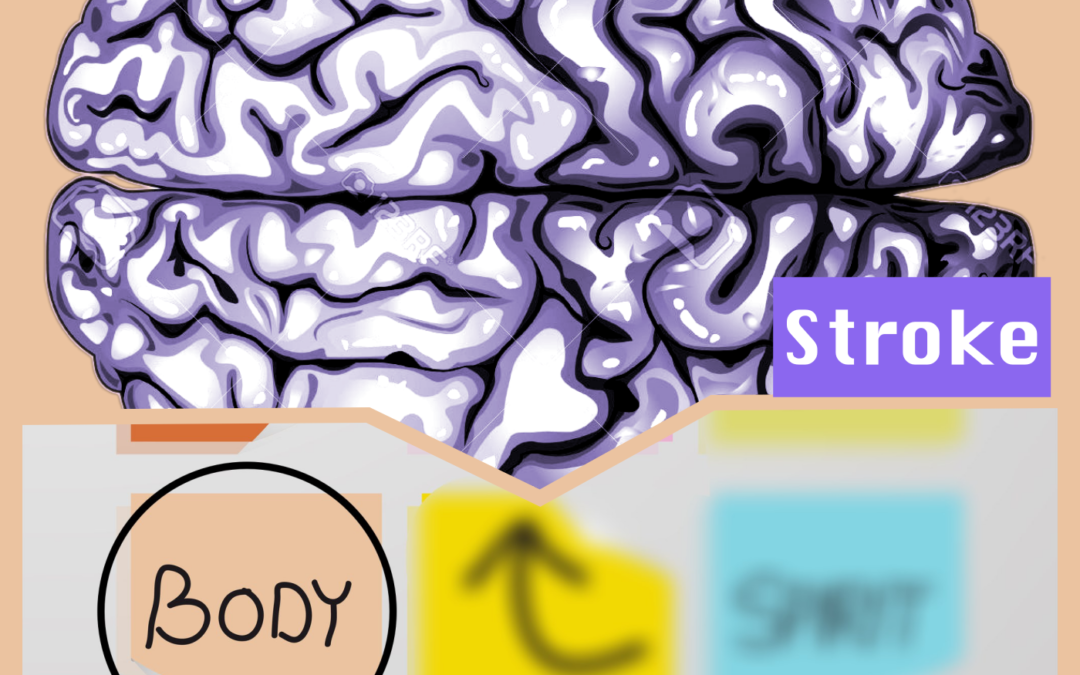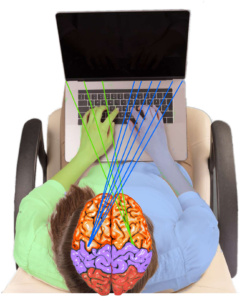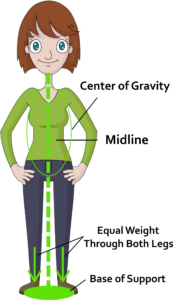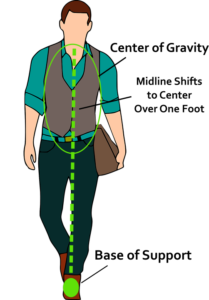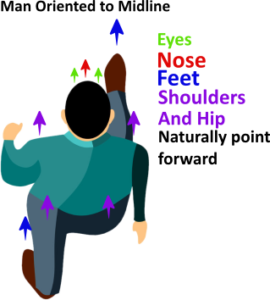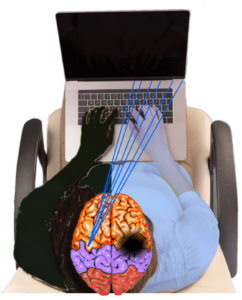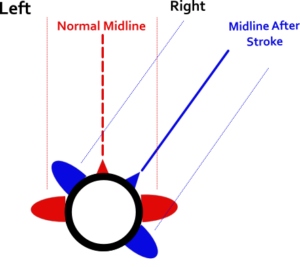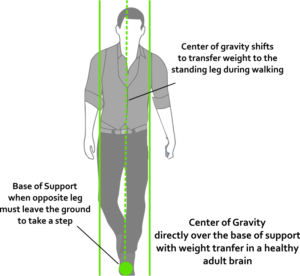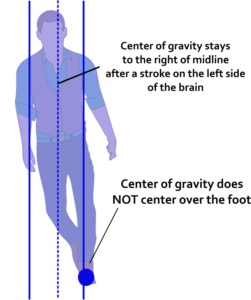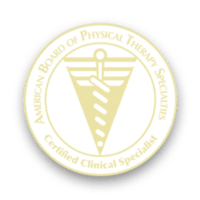A stroke can cause problems with vision, sensation, muscle strength, muscle tone and body awareness (knowing where the body is in space). It also causes problems with thinking, reasoning, problem solving, attention, and memory. Put all of this together, and many lose the ability to do everyday tasks. This includes, of course, walking. To many stroke survivors, walking means freedom, gives hope, and a sense of feeling “normal” again. To many, the ultimate goal would be to walk outside, in crowds, on the beach, and step over obstacles without fear of falling. Is this possible? Is this a realistic expectation after a stroke? Re-gaining strength and normal muscle tone are important. Walking ALSO requires regaining accurate body and spatial awareness. If you regain strength and do not address body awareness, a 100% recovery may NOT be possible.
Do you suffer from hemi-neglect (decrease ability to respond, react, or engage with one side of the body and environment)? Or poor spatial awareness? Or do you find it difficult to stand with your feet side by side ![]() ? stand with your feet in a tandem position
? stand with your feet in a tandem position ![]() ? Or stand solely on your leg effected by the stroke
? Or stand solely on your leg effected by the stroke![]() ?
?
If you have suffered a stroke, and answered yes to one of these situations, you might have problems with spatial awareness or body awareness.
What does spatial awareness look like in a healthy brain?
Spatial and body awareness is possible when the brain receives equal information from both sides of the body and the environment.
This gives the brain and the body symmetry, and is essential to walking.
What is symmetry and why is it so important?
Walking requires the ability to stand symmetrically (body weight evenly distributed between the right and left leg)
Walking requires the ability to transfer weight from one leg to the other
Bipedal standing (standing on both feet) and unilateral standing (standing on one foot) require the ability position, and maintain, the center of gravity over the base of support (foot or feet).
How does midline orientation help with walking?
In a healthy brain, we naturally orient to midline. This means, we naturally direct are vision, point our nose, square our shoulders, our hips, and our feet straight ahead in line with a subconscious middle line straight down the center of the body with equal amounts of the body on either side of that line.
Spatial awareness, symmetry, and orienting to midline are all things we learn when we first learn how to walk as a toddler. We never give this much thought once we become adults (when not under the influence of any adult beverages ![]() ). It is automatic. This automatic quality is essential to maintain balance when in motion (walking, stepping, or turning the body).
). It is automatic. This automatic quality is essential to maintain balance when in motion (walking, stepping, or turning the body).
What happens to spatial awareness after a stroke?
A stroke leaves one side of the brain damaged. The result? Assymetry.
What is Assymetry?
Now one side of the brain is only getting pieces of information OR no information at all from one side of the body and the environment.
Assymetry may result in the inability to orient to midline and has devastating consequences on the ability to walk.
How does a stroke cause the inability to orient to midline?
After a stroke, the brain is receiving MORE information from one side of the brain causing the brain and the body to orient toward the uninvolved side (the side receiving most of the information). And symmetry is lost. 🙁
Just as we learned midline as toddlers (without really thinking about it), orienting to the uninvolved side occurs automatically WITHOUT YOU EVEN KNOWING IT![]() . Huge problem. Why? Well, centering the body over the base of support requires a reference point. This point of reference NEEDS to be the ACTUAL middle line of the body. But wait! The good news is if a therapist identifies this, there are strategies and manual techniques to prevent this from becoming worse and even better, re-orient back to the true midline of the body.
. Huge problem. Why? Well, centering the body over the base of support requires a reference point. This point of reference NEEDS to be the ACTUAL middle line of the body. But wait! The good news is if a therapist identifies this, there are strategies and manual techniques to prevent this from becoming worse and even better, re-orient back to the true midline of the body.
How does asymmetry and orienting to the strong side negatively impact walking?
Orienting to the left throws your whole world “off” center. When you think you are in the midline, you may actually be slightly toward the uninvolved side.
So orienting to the uninvolved side, makes it difficult to center the body correctly when we must transfer weight to the involved leg. So what is the logical solution? Adapt. How do most stroke survivors adapt? Put a cane in the uninvolved hand and problem solved. Right?
How is a cane HURTING your walking recovery?
Now it should be clear how asymmetry impacts walking. However, you have gotten pretty good at ambulating with a cane. So, you are “good” on this whole spatial awareness thing. You will just use the cane until your balance is a little better, right? I mean at least it keeps you independent for now and you ARE walking.
You want to walk ASAP. And the cane makes this possible. I get it. But what if this meant you would sacrifice a complete recovery for this short-term gratification? Let me explain.
You are already orienting to the uninvolved side. Now you put a safety or security blanket (a cane) in the uninvolved hand. This will further reinforce this orientation to the left. So, what happens when you finally take that cane away? The brain, and your body are NOT happy. Now you have to undo all the “learning” your brain did to adapt to using a cane. I am not suggesting to jump right to walking without any type of device, but there are many intermediate steps that many patients (and unfortunately many therapists) skip in order to help YOU achieve your goal of walking NOW.
How do you correct asymmetry and poor spatial awareness?
As I stated at the start, a stroke effects almost every system in our body and therefore, almost every system must be addressed in order to correct this and have the best chance at a full recovery. Treatment will focus on visual scanning, graded movements with manual cues to re-teach the brain actual midline, and lots and lots and lots of standing. Standing in front of a mirror is the best thing you can add to a home program to correct spatial and body awareness issues. And remember, stroke recovery is a marathon, not a sprint. Slowing down and perfecting each step of the recovery process will give YOU the BEST long term outcome! So don’t give up, be patient through plateaus and celebrate each success!
Call Today and Speak to a Specialist
407-900-0841
Contact Us Today!

Board Certified Neurologic Specialists
Don’t settle for general therapists and treatments by less qualified techs and assistants. 100% of our staff are board certified neurologic Doctors of Physical Therapy

